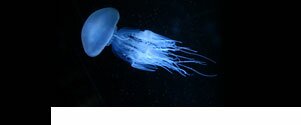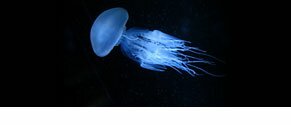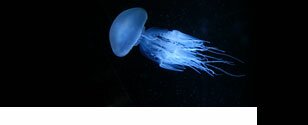Purple Jellyfish
Intriguing Facts about the Purple Jellyfish
Jellyfish of all species, even the purple jellyfish belong to Phylum Cnidaria and Class Scyphozoa, which are two words in Greek that translate to “Stinging Nettle” and “Cup.” Although we call this creature a jellyfish, in truth, it is not a fish at all but plankton, which consists of drifting organisms to include plants, animals, bacteria, and archaea.
Although all jellyfish, including the purple jellyfish move about the water with great skill, they do not swim. Typically, jellyfish are found in ocean waters although there are a few species that survive in rivers and lakes. Interesting, the purple jellyfish is just one of 10,000 unique species, each unique and having existed on this plant for more than 6 million years.
Some species are better known than the purple jellyfish such as the Lion’s Mane, Box Jellyfish, and Man-o-War, although none as beautiful. However, the one thing that all jellyfish share is a painful sting. In fact, both the Lion’s Mane and Box jellyfish have such powerful stings that they can be fatal. Sadly, people actually die from stings every year and even for the non-lethal stings, the pain produced by a sting is horrific.
The body of the jellyfish varies depending on the species. Some are quite small, even hard to see, and others can grow to seven feel long or more. In fact, some species of jellyfish have tentacles that reach beyond 120 feet. For the purple jellyfish, it is shaped like a bell, which can measure up to 70 centimeters in diameter. This species also has four tentacles that contain stingers and several nematocysts on the sides that deliver a bad sting. The purple jellyfish also has eight sensory rhopalla that can detect light, pressure, and smell changes, as well as other external stimuli.
For feeding, the purple jellyfish depends on the tentacles that are designed to paralyze or even kill prey. From there, the tentacles bring the food to the jellyfish’s mouth. As far as diet, most jellyfish eat on larval fish, salps, fish eggs, ctenophores, zooplankton, copepods, and sometimes, scyphomedusa. Although many people think of jellyfish as being creepy, the truth is that if you were ever to watch one flow through water, you would be mesmerized, even finding them beautiful and intriguing.
One of the most beautiful species is the purple jellyfish, which can only be found on the California coastline. The design and color associated with this jellyfish is simply gorgeous. When still young, the bell has a pink color and the tentacles are dark, usually burgundy or maroon, and very long. However, as the purple jellyfish matures, so does the body.
Once the purple jellyfish reaches what we would consider teenage years, frilly oral arms begin to develop, which are quite a sight to see since they are quite long. However, in adulthood is when this jellyfish really changes. At adulthood, the purple jellyfish features beautiful purple stripes that appear along the bell. In addition, color once seen in the tentacles begins to disappear, as do the oral arms. Even the density of the tentacles thickens.
Throughout the different phases of life for the purple jellyfish, many changes occur. However, when the purple strips appear, the jellyfish becomes dramatic and impressive. The body is almost transparent, resembling gelatin. Since the bell of the purple jellyfish is filled with water, it can be extremely heavy, weighing hundreds of pounds. In fact, close to 98% of the body is water. While all jellyfish, especially the purple jellyfish put on a show beneath the water, when they wash shore, the die very quickly in that they cannot live outside of water.


